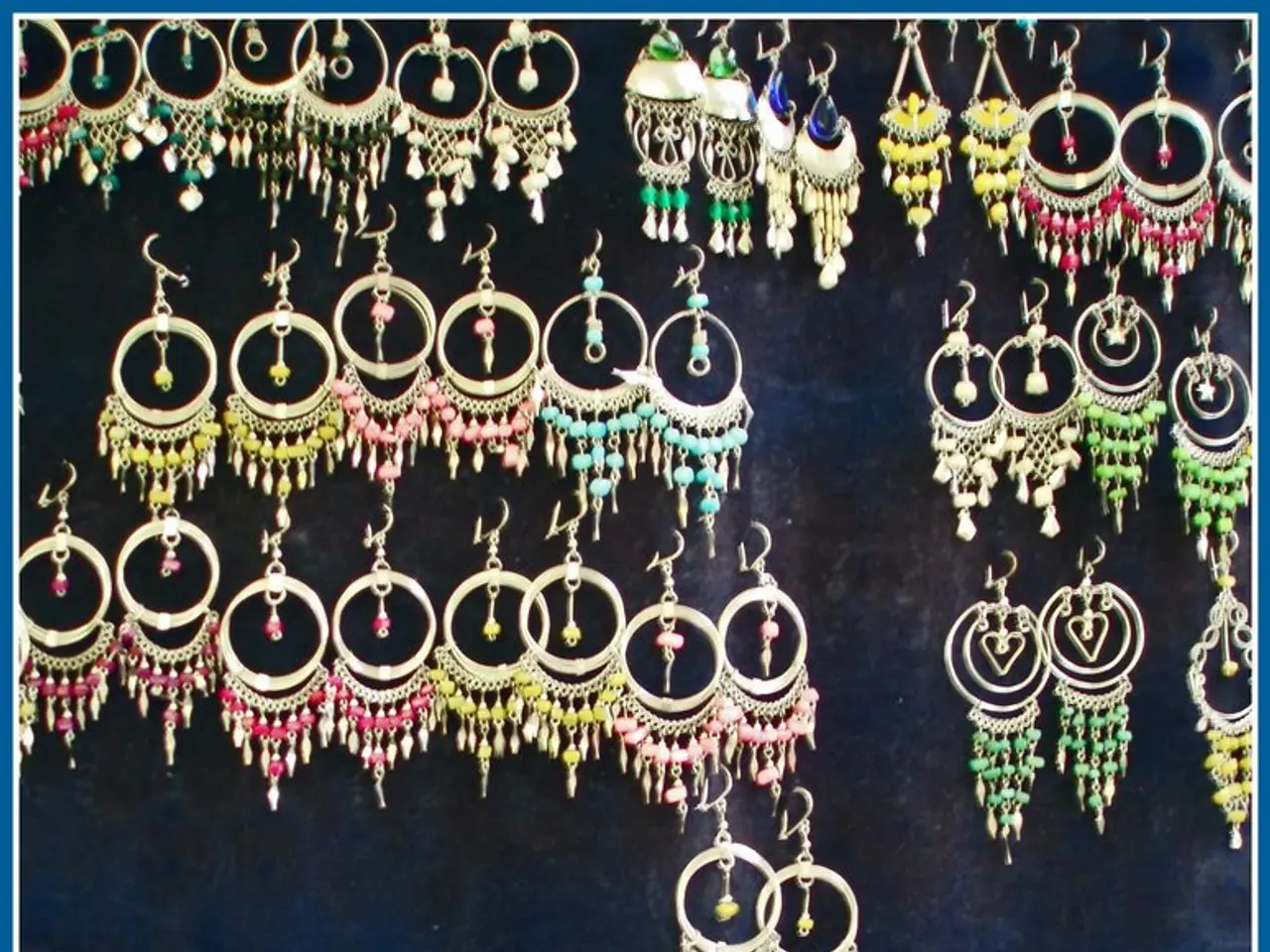Notable Gemmological Findings: Top Blue Diamonds Every Appraiser Should Recognize
In the world of precious gems, few are as captivating and valuable as blue diamonds. These unique stones, with their stunning blue hues, are the result of specific elements and natural processes deep within the Earth.
The primary element composing all diamonds is carbon, arranged in a crystal structure. However, it is the trace element boron that gives blue diamonds their distinctive colour. Boron absorbs certain wavelengths of light, causing the diamond to reflect blue shades.
Blue diamonds form naturally in the deepest parts of the Earth's mantle under extreme pressure and temperature conditions over millions of years. During this formation, boron atoms become incorporated into the carbon crystal structure, resulting in the distinct blue colour.
The depth and environmental conditions distinguish blue diamonds from other coloured diamonds formed by other impurities or structural defects, such as nitrogen causing yellow diamonds and radiation exposure causing green diamonds.
The Blue Moon of Josephine, a 12.03 carat fancy vivid blue cushion-shaped stone, holds the record for the highest per-carat price in the blue diamond world at $4,028,941. Other famous blue diamonds include the Sky Blue Diamond, the Wittelsbach-Graff Diamond, the Millennium Blue diamond, the Hope Diamond, the Blue diamond, the Memory of Autumn Leaves blue diamond, and the Argyle Tender Blue.
Recently, the De Beers Cullinan Blue Diamond was discovered in April 2021, weighing 15.10 carats. This Type IIb diamond, representing less than 0.5% of all diamonds, was sold at auction for $57.4 million.
Laboratory-grown diamonds can simulate formation conditions, but the colour in blue lab-grown diamonds would similarly depend on introducing boron during their creation via processes like HPHT or CVD.
In summary, the natural geological formation under high-pressure, high-temperature conditions deep within the Earth, combined with the presence of boron impurities in the crystal lattice, creates blue diamonds. This makes them rare and highly valued, like the famous Hope Diamond, which owes its colour to boron.
**Table:**
| Diamond | Carat Weight | Shape | Colour | Notable Features | |---------|--------------|-------|--------|------------------| | Blue Moon of Josephine | 12.03 | Cushion | Fancy Vivid Blue | Highest per-carat price in the blue diamond world | | Sky Blue Diamond | 8.01 | Square-Cut | VVS1 Fancy Vivid Blue | Sold for US $17 million at Sotheby's Geneva in 2016 | | Wittelsbach-Graff Diamond | 35.56 | - | Fancy Deep Greyish Blue | Believed to come from India's famous Golconda mines | | Millennium Blue diamond | 10.10 | Oval | Internally Flawless | Sold at Sotheby's Hong Kong in April 2016 for US $31.8 million | | Hope Diamond | 45.52 | - | Fancy Dark Greyish Blue | On display at the Smithsonian Institute | | Blue diamond | 13.22 | Pear | Fancy Vivid Blue | Sold in 2014 | | Memory of Autumn Leaves blue diamond | 14.54 | - | Internally Flawless, Type IIb | Sold for US $42 million | | De Beers Cullinan Blue Diamond | 15.10 | - | Type IIb | Discovered in April 2021, sold for US $57.4 million |
These rare and captivating blue diamonds continue to fascinate collectors and gem enthusiasts alike, showcasing the wonders of the Earth's natural processes and the rarity of the elements that create these stunning gems.
- In the realm of gemmology, a diploma focused on the study of blue diamonds would delve into their unique chemistry, formation, and the role of trace elements like boron in creating their distinct blue hues.
- A health-and-wellness routine, encompassing fitness-and-exercise and nutrition, could potentially mimic the high-pressure, high-temperature conditions under which blue diamonds are formed, fostering internal growth and promoting overall vitality.
- Gathering knowledge about gemstones, particularly blue diamonds, can provide insights into the science behind these precious gems, much like understanding the science of sports can enhance performance on the field or court.
- The high value attributed to blue diamonds, such as the Blue Moon of Josephine and the De Beers Cullinan Blue Diamond, can inspire a commitment to achieving fitness goals and maintaining a balanced diet, striving for the 'rare' and 'highly valuable' within personal health and wellness.




